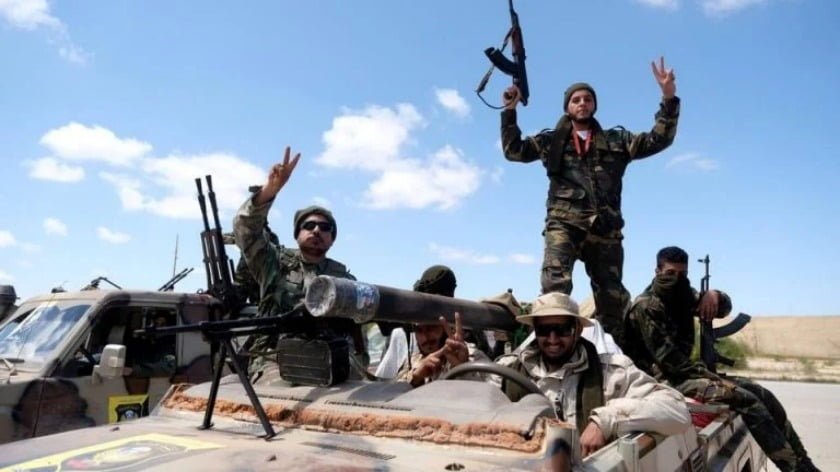Afghanistan – Washington’s Drug Heaven?
Ever since 2001, when Washington decided to invade Afghanistan in the aftermath of 9/11 attacks, the US has been conducting military operations in the territory of this country. This war has already become the longest American conflict, beating even the Vietnam War which lasted from 1964 to 1975.
It’s curious that this war has already become the most expensive or perhaps one of the most expensive conflicts in the history of the United States. According to a number of Pentagon reports, since the invasion of Afghanistan, the US government has spent nearly one trillion dollars on its attempts to eradicate terrorism and make Afghanistan free of drugs. This sum doesn’t not include the sums that the CIA has been handing over to Afghan officials, while sponsoring such groups as the Taliban and Al-Qaeda and Haqqani – those very groups that are trying to kill as many US soldiers as they can in Afghanistan.
As it’s been reported by the Watson Institute for International and Public Affairs at Brown University, the war that Washington has unleashed against Afghanistan has resulted in the deaths of at least one hundred thousand civilians.
Moreover, it’s a well-known fact that before the US and NATO aggression against Afghanistan, the Taliban has almost managed to put an end to the production of drugs in this country, with the year 2010 being known to date as the year when the level of drug production has been the lowest in the modern history of the country. At the same time, since the US invasion of Afghanistan, the level of production of heroin has increased almost by 40 times, which resulted in a situation when today about 90% of all heroin and opium being sold on the black market is of Afghan origin.
A report by the US government agency, the Special Inspector General for Afghanistan’s Recovery (SIGAR), notes that between 2002 and March 2017, the US wasted 8.5 billion dollars on efforts to eradicate the Afghan drug threat and failed to produce any results, since Afghanistan still remains the world’s largest producer of opium, which has been supplying both the European and American drug markets. The report notes that the total area of land cultivated for the production of opium in Afghanistan last year reached 201,000 hectares. The level of potential opium production has recently increased by another 43%. In the course of the operations carried out in 2016 in a bid to put an end to drug trade, only 355 hectares of drug crops were burnt, which constitutes a 91% decrease from the level that US army troops showed in 2015.
So should we be surprised that The Raw Story would note in one of its articles:
The number of Americans using heroin has increased five-fold in the last decade and dependence has more than tripled, research conducted at Columbia University’s Mailman School of Public Health indicated. Moreover, the Centers for Disease Control and Prevention reports heroin-related overdose deaths have quadrupled since 2010.
It’s hardly a secret that for centuries drugs have been used in various armies to raise the “fighting spirit”. One can recall how just one sip of the druid’s narcotic potion made the Asterix galls invulnerable, unyielding and indestructible.
Drugs were used both in the WWII and after it to improve military performance of allied troops. It’s been noted that large parts of the US chemical development programs have remained classified for the post-war period, it is clear that considerable attention has been paid to research into ‘supplements’ that can have a positive effect on members of the military. The US Air Force, for example, has administered dextroamphetamines to its pilots undertaking long missions, to improve their alertness and reduce fatigue. And of the US pilots who took part in Operation Desert Storm in 1991, 65% used stimulants, with just over half reporting that they were either beneficial or essential to operations.
However, not all experiences proved positive. There’s reports that serious side-effects can include confusion and psychosis. Investigations into an exercise at the Tarnak Farms training camp in Afghanistan in April 2002 that left four Canadian servicemen dead and eight wounded as a result of friendly fire revealed that US F-16 pilots had been sanctioned to use Dexedrine. The development by the US Army of chemical stimulants has also not been without consequences: two soldiers died after being issued with Dimethylamine, a performance-enhancing drug banned by the World Anti-Doping Agency.
The research into better, more focused combat forces have been so extensive that for more than a decade the US has supported a biochemical programme whose aims include finding ways to allow servicemen to function better in hostile environments, use less energy, and improve battlefield performance, reports the Aeon Magazine.
It’s curious that llegal drug use among U.S. Navy SEALs is increasingly on the rise and is largely ignored by higher authorities, notes the CBS News. However, those who are reluctant about what is actually happening in the US armed forced are facing an early discharge. Thus, five Navy SEALs faced the expulsion for drug last year.
Former SEAls confined to the CBS News that the growing drug use was eroding confidence among the SEAL teams and disturbing unit cohesion.“If we need your ability, I don’t need to be in the back of my mind thinking that, OK, can I really trust this guy? Is he 100% going to cover my back?,” one SEAL said describing the effects of drug use.
But the maintenance of the level drug production in Afghanistan is not simply goes hand-in-hand with the interests of the Pentagon, but also of a great many of Americans working in this country. After all, there must be some explanation to the fact that a number of employees of the US Embassy in Afghanistan has recently been fired for the use and storing of drugs.
So, some may perceive the war in Afghanistan as the bloody conflict that has already resulted in the death of hundreds of thousands of people, while others see it as a business opportunity that can make them filthy rich in no time at all.
The only question is to what end this conflict will be carried on?
By Jean Périer
Source: New Eastern Outlook







